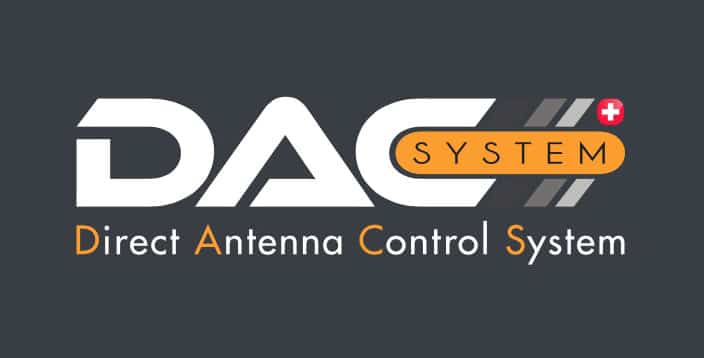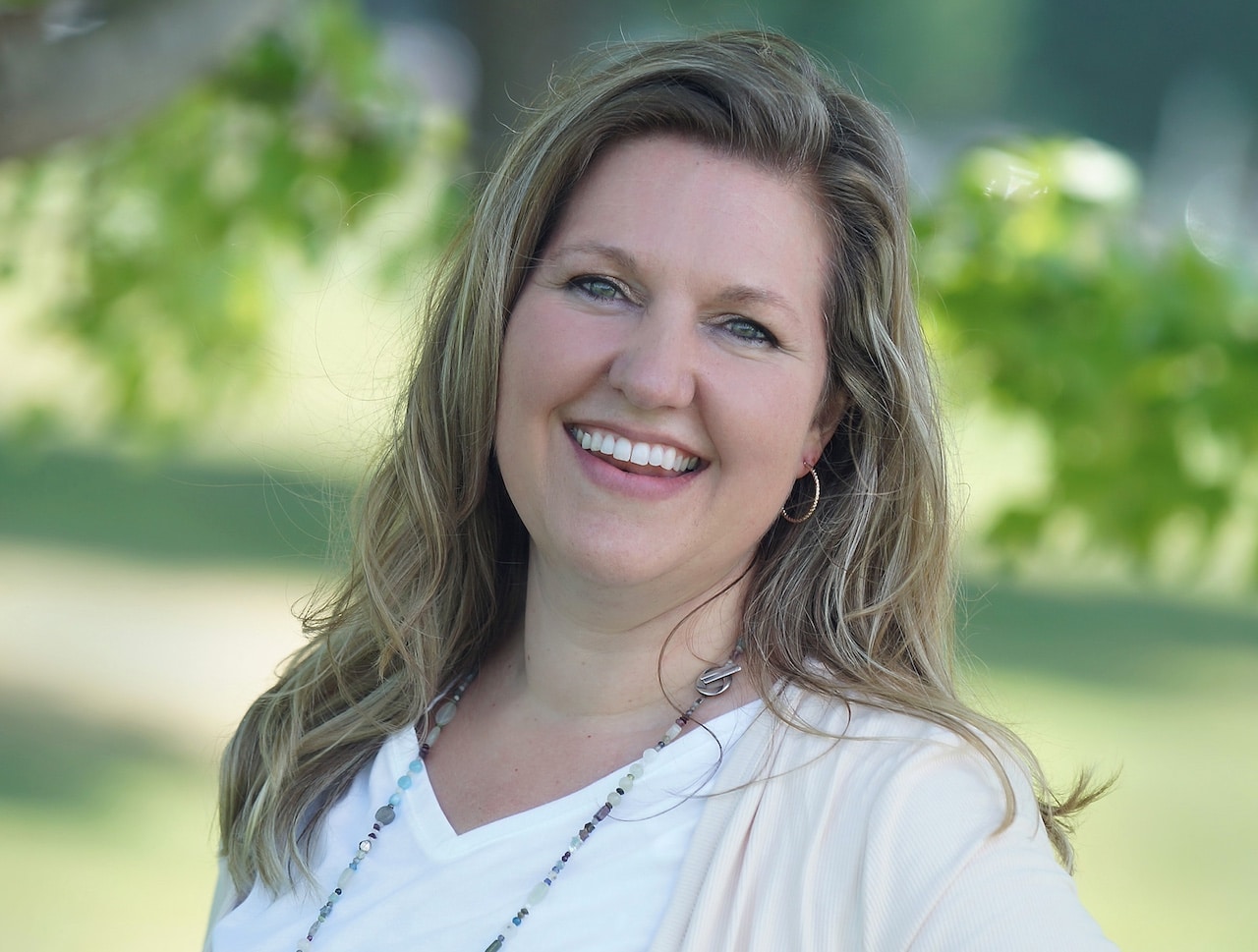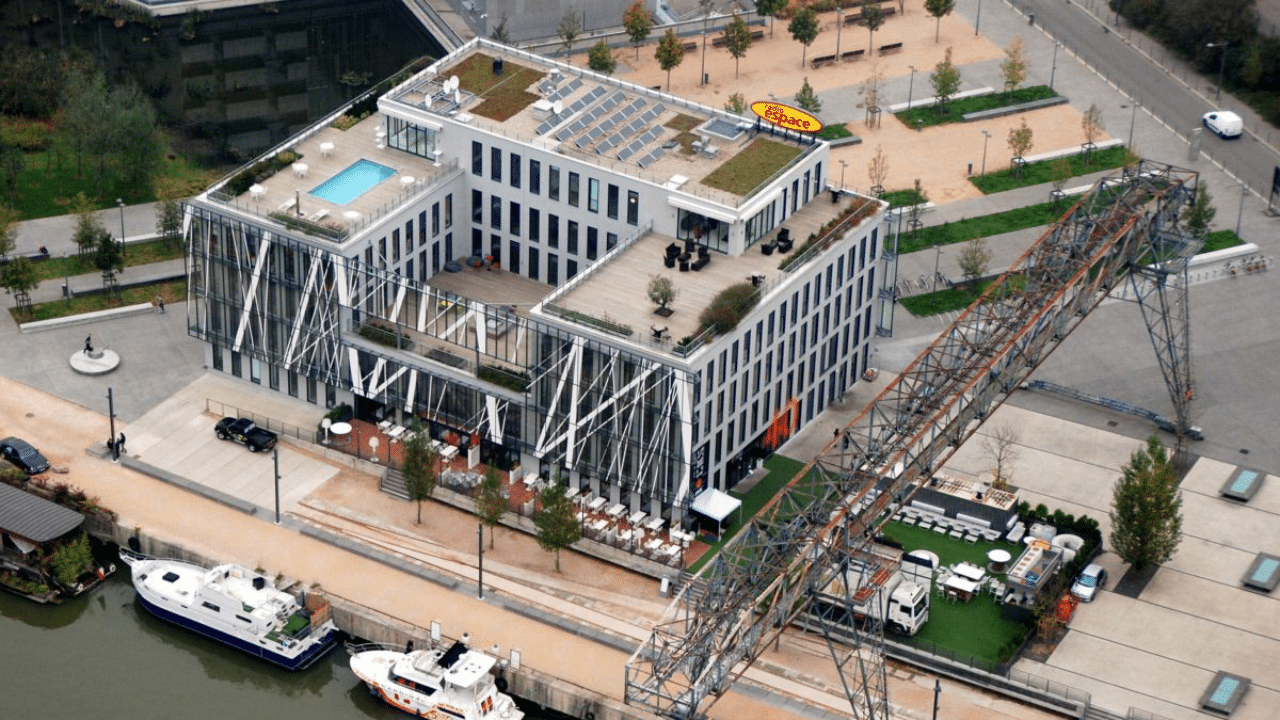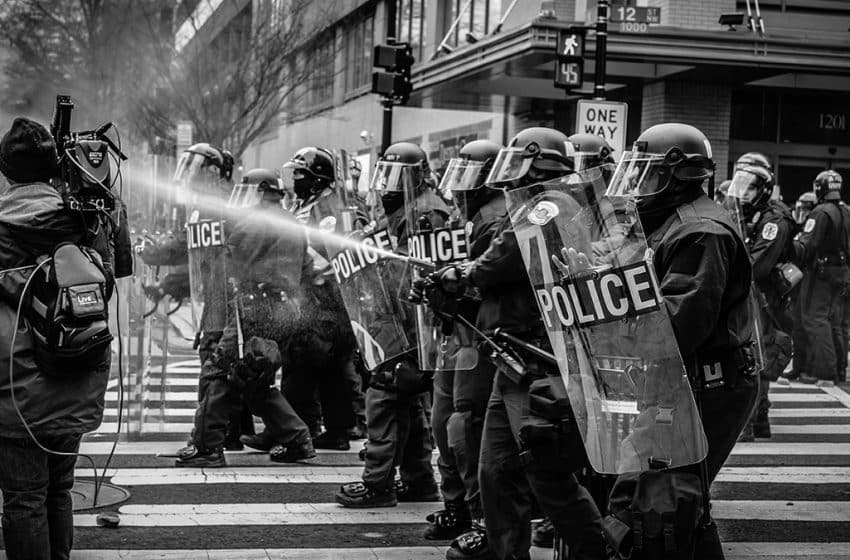
NEW YORK — How can we ensure our staff’s safety in the studio and in the field? This question is top of mind for me due to a number of reasons. Mostly, to state the obvious, the last year has been very “unsafe” because of the global pandemic and, at least in the United States, increased civil unrest.
A chief mission for New York Public Radio is to provide news and information to our community. With a news staff of approximately 65 professionals plus a handful of engineering staff in the field supporting remotes and maintaining transmitter sites, we need to ensure they can effectively cover the story and support our broadcast infrastructure without putting their lives at risk.
To address this challenge, we’ve been monitoring our areas and staff via various intelligence services, so we are informed and prepared for the situation at hand.
Preventive Measures
For monitoring geographical areas, we have both personnel and technology in place to help our field reporters. For example, our manager of office security liaises with several agencies from which he receives multiple daily updates. These come from different sources of intelligence: mostly centering around federal, state and local law enforcement, but also key are social media feeds such as Twitter and hyper-local services in our area.
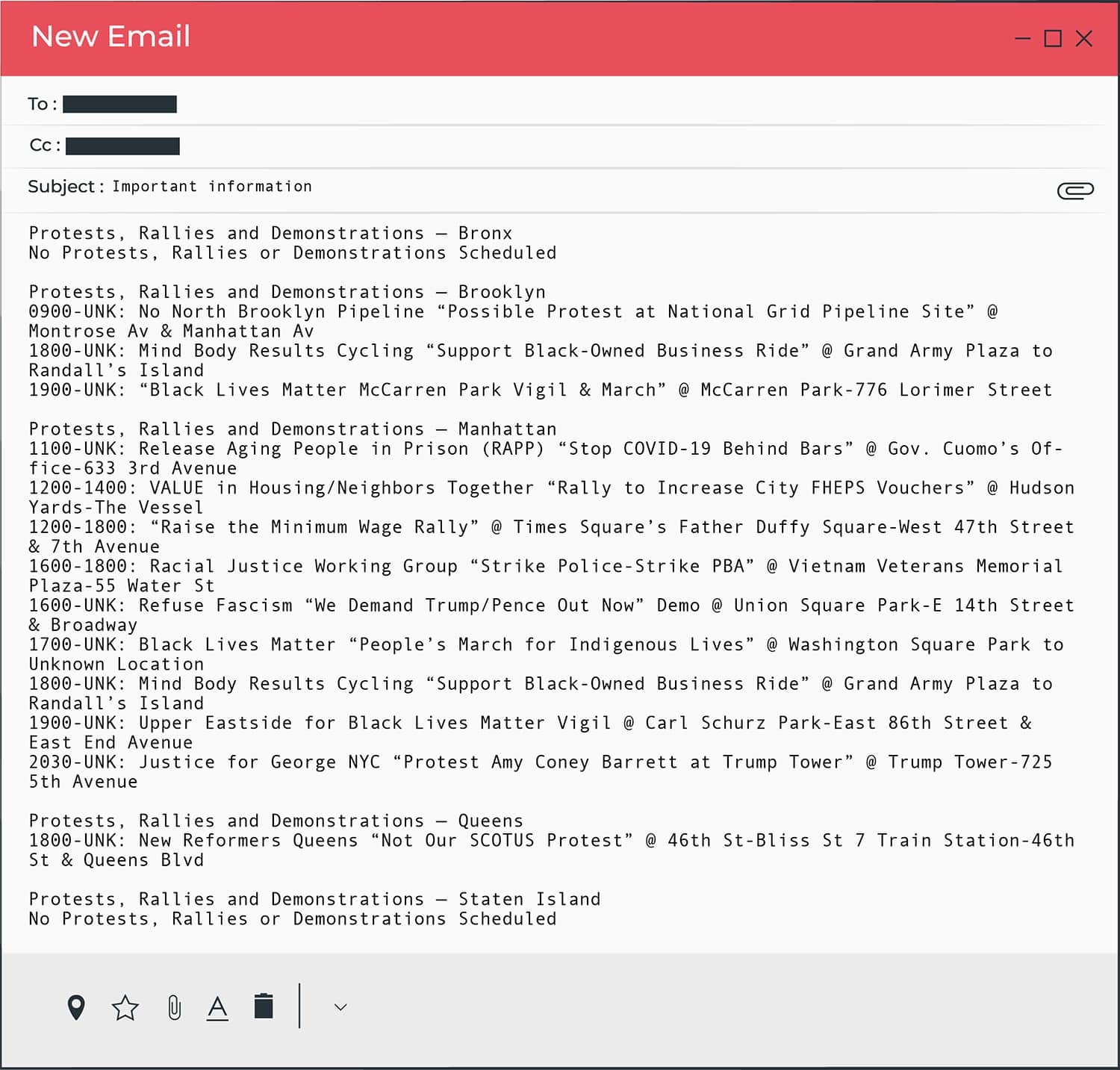
This first example shows one of the daily email feeds he receives each morning — this particular day was sometime last autumn. It is a daily summary from a service of the NYC Police Dept of planned protests and civil demonstrations in each of the five boroughs of NYC.
The issue with this method is that it’s a manual process and dependent solely upon one individual. Additionally, if this person were to forward every single email he receives each morning to all reporters and editors in the newsroom, it would be counter-productive, because it would require someone sifting through 20 or so daily emails to find out if the area to which they are assigned or where they live or commute through would that day be holding a protest.
So, we are now in the process of implementing an app on each staff member’s phone that serves as an “aggregator of threat intelligence sources.” The system tracks their location and automatically notifies them if they are in an area with some threat that we have previously defined (civil unrest, bomb threat, fire, utility emergency, active shooter, building collapse, etc.).
We previously used the app, which is designed by a company called Everbridge, prior to 2020 for manual emergency notification via an individual’s phone (SMS and voice calls), but because of the recent local situation, we decided to take it a step further by integrating an automated notification to our core notification system.
For the Engineers Too
We use this measure to protect not only our reporters but also our transmitter engineers and field technicians. It’s not only civil unrest that can threaten transmitter sites; environmental issues can too. The app notifies the team in the event of such things as brush fires, flooding, wind and tornado alerts, and icing.
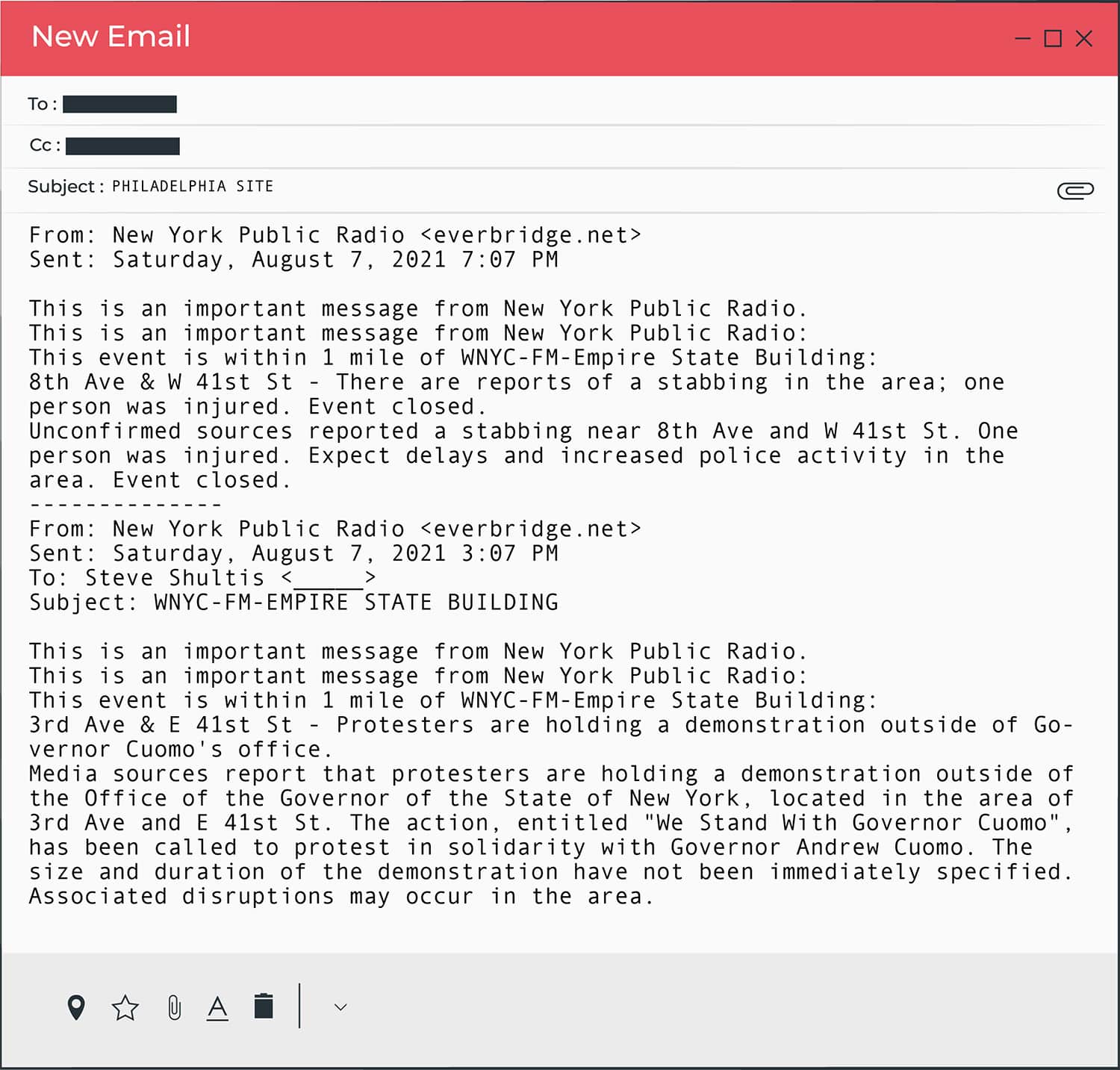
To set this up, we added geo-fencing to all the transmitter sites in our area, and the app automatically aggregates threat intelligence occurring live in these coordinates and sends them to our technical staff via email.
For any technician who has spent time in the field maintaining transmitter sites, they will appreciate the insight this service provides. Most transmitter sites are isolated.
Even in the middle of Manhattan, an engineer will be hundreds of feet above the street at a transmitter site near their broadcast tower working most of the day. Now imagine leaving work at the end of the day and exiting the building into a protest of thousands of people in the street. The second example displays examples of automatically generated alerts a technician will receive over the day, should a situation like this develop.
Safety in the Office, Studios
Health safety of our staff is also a concern, so in addition to the above-mentioned circumstances, we are now integrating a service that provides our employees an “office pass” for entry into our office/studios/newsroom based on their answers to several health questions each morning of the day they arrive onsite.
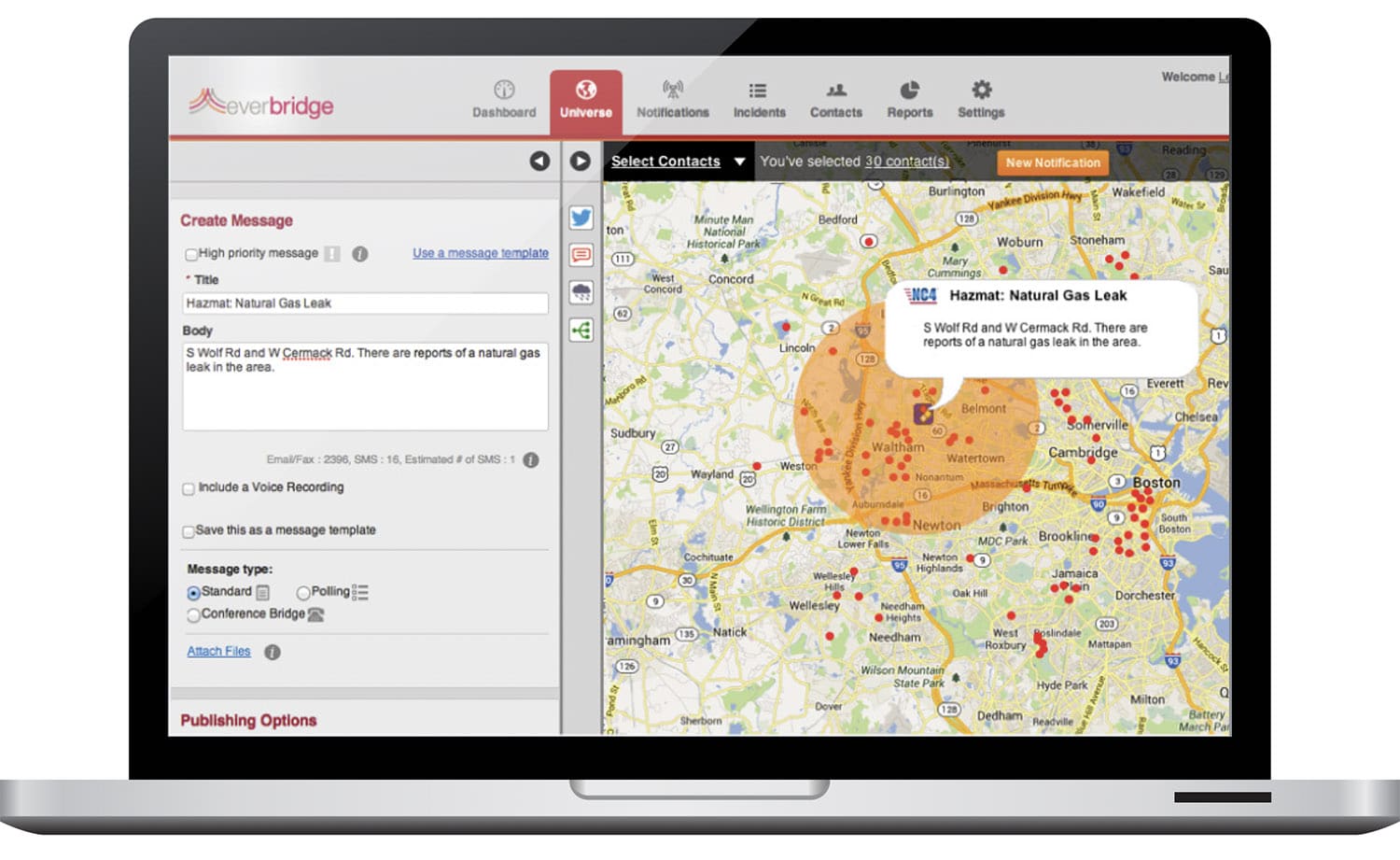
The employee selects the space at which he or she wishes to attend prior to coming onsite — either in the office, newsroom or studio. The system has predetermined seats available for selection on a given day based on our company’s social distancing guidance. For example, in today’s guidance, one can only select a seat six feet (approximately two meters) from the nearest co-worker. This is called “hoteling,” and our company has begun using this instead of assigned seating to ensure safe social distancing.
These solutions are quite common now in the employee management marketplace and many systems have this available as an add-on to the platform that a company may already be using.
The present context is challenging for all organizations. Broadcasters directly benefit from the talents of their employees, and the value we place on our employees should be reflected in the care and protection we can offer them.
The steps I’ve outlined here are those that we’ve taken thus far. However, the other constant in life is change.
Therefore, if we are to remain effective in keeping our staff safe, we must continually monitor these solutions and modify and adapt them as the environment and metrics change.
The author is Chief Technology Officer for New York Public Radio.


